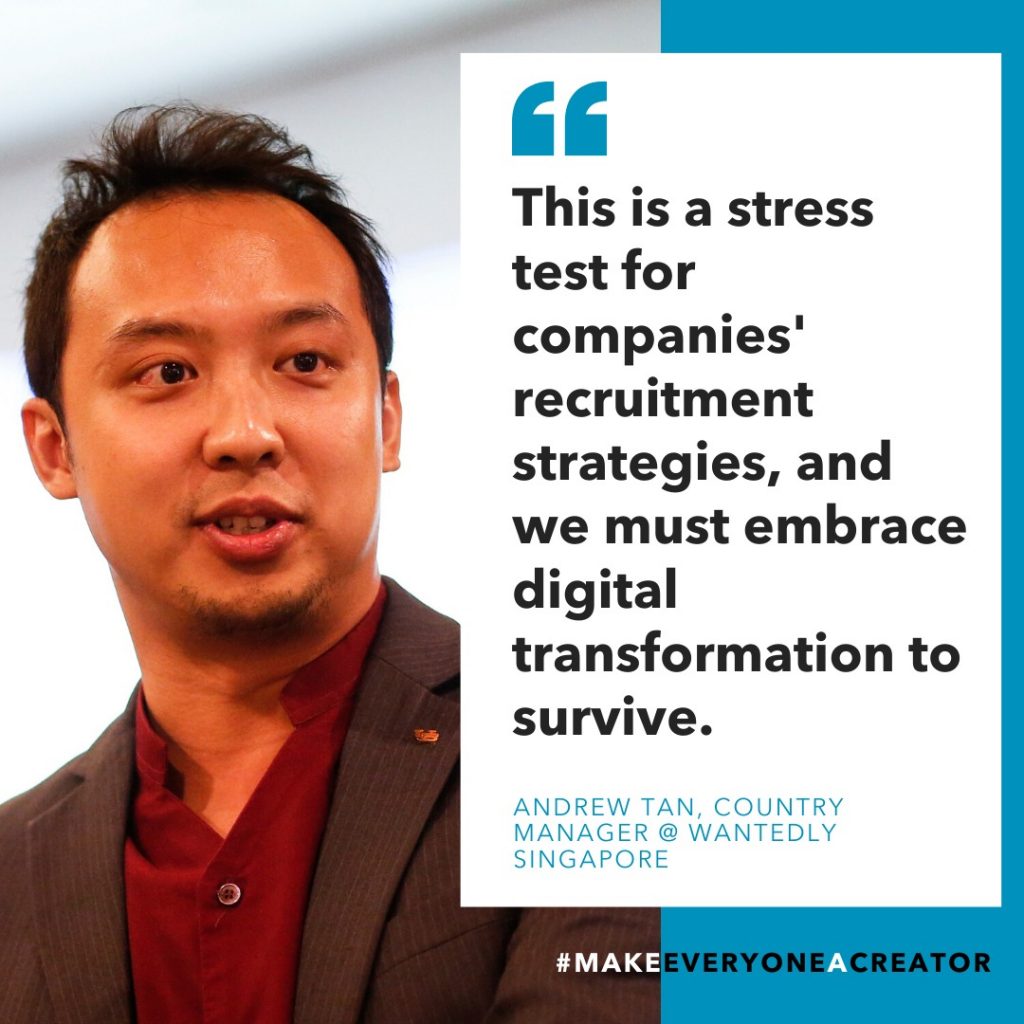Recruiting & Retrenchment During COVID-19
Today we have the huge privilege of having Andrew Tan, the Country Manager of Wantedly Singapore, with us! In this interview, Andrew shares with us his insights about some of the issues faced by companies regarding onboarding, recruiting and retrenchment during COVID-19.
Here is the breakdown of the interview, by timestamps:
0:59: An overview of Wantedly and Country Manager, Andrew Tan
Andrew enthusiastically starts off the interview by stating that Wantedly and TeamSpirit both have origins from Japan and that he is happy to talk with TeamSpirit. Andrew tells the viewers that his goal in life is to build ecosystems. He states that his goal enabled him to lead other people who is driven by their passion to help others. He further explains that their shared passion can be shown through employer branding for companies by attracting the right talents.
1:00: Recruitment in relation to digital transformation
Andrew walks the viewers through the traditional way of hiring people which consists of the following: applying, screening, and hiring the person. Since there are changes on how information is disseminated and absorbed, there should also be a new approach to hiring people, which is called Recruitment Marketing, a process to attract potential employees even before they apply to a company.
For jobseekers to become attracted to a company, there are two phases:
- The first is lead generation, in which the employer searches for the right people to hire by making a strong online presence;
- For the second phase known as lead nurturing, the company forms strong relationships with potential employees through different social media platforms. This phase is imperative since these connections will enable the company to make a talent pool in which they find the best candidates.
Traditionally, recruitment only entailed placing people in a certain position, but now, the definition has evolved. It’s about hiring people and also making sure that they fit and flourish in the organisation.
05:05: Cultural differences when it comes to looking at a job
Even though most people look for jobs to survive, Andrew states that eventually, people look for more fulfillment that is not just money. This is where purpose and ambition come in.
06:46: Retrenchment during a pandemic

There have been multiple lay-offs due to COVID-19. Some companies handled it humanely, while the others did the opposite.
Andrew differentiates good companies from bad ones by the way they responsibly and directly communicate retrenchment and salary cuts with their employees. The higher-ups should show to their employees that they are in this together and that retrenchment should be the last resort; it should be after hiring freezes, salary cuts, etc. Companies should communicate openly with their employees and offer support in the form of severance packages. Communication is imperative since it will allow employees to air out feedback and questions. The Management should always try to help their employees in any way they can.
12:33: Tips on improving work culture
Having good company culture should be started as soon as possible. During this crisis, if the management cultivated good company culture, the employees who will face retrenchment and salary cuts will be able to digest and accept the news faster. This will not only have an impact on the current employees, but potential employees in the future as well.
15:41: Who decides company’s culture
Andrew pointed out that a company’s culture is equal to its people. Specifically, it’s the CEO’s and the executives who explicitly write it down, modify it, and pass the message around. The HR will be the ones responsible for amplifying it.
17:16: Debunking a digital transformation myth
One myth surrounding digital transformation that Andrew wanted to debunk was that digital transformation was only for the “big boys”, i.e., recruitment marketing is only for big and established companies. Small to medium-sized companies can also participate in this. Anyone can begin their journey in starting up their employer branding as early as now. Through digital transformation, companies can easily share and collate ideas and techniques to other businesses.
19:03 Toxic culture in a company
If the person is toxic and does not align with the company’s culture, firing them can be an option but it can be an indication that there’s a mistake on the company’s part as well. A company usually has a few assessments to gauge if the candidate is culture fit or not. If the candidate is already an employee and they are toxic, one way to mitigate it is through employee engagement. Employee engagement consists of management and peer reviews. Through these reviews, the management will know how to proceed.
Andrew then ends the interview saying that we are all experiencing this crisis and good will is something companies can build and maintain. We should lend support to one another in good times and in bad.
—
Did you enjoy this interview? Let us know your thoughts!

